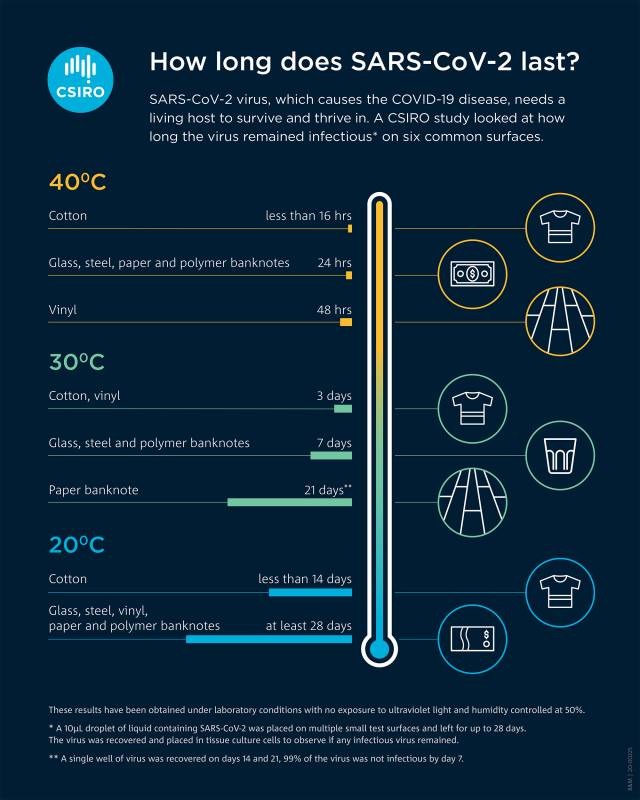New research on COVID-19 shows it survives longer on surfaces than influenza
Researchers at CSIRO have been performing research on the COVID-19 virus, investigating virus survivability on surfaces. The team found that COVID-19 causing virus last for ten days longer than influenza on some surfaces. The virus has a longer life when on glass, stainless steel, and paper banknotes. It also lasts longer at lower temperatures.The virus can survive for up to 28 days on those surfaces and at lower temperatures. The researchers expressly point out that glass surfaces, such as those found on mobile phone screens, allow the virus to survive longer. CSIRO chief executive Dr. Larry Marshall says that surface survivability research builds on the lab's other investigations into the COVID-19 causing virus.
Researcher Dr. Debbie Eagles says the team's work shows the virus can remain infectious on surfaces for long periods. The finding reinforces the need for good practices, including regular hand washing and cleaning surfaces. At 20 degrees Celsius, which is about room temperature, the virus is said to be "extremely robust." In similar experiments, the virus Influenza A survives for 17 days.
In the research, the team dried the virus in artificial mucus on different surfaces and concentrations similar to those found in samples from infected patients. After a month, the virus was re-isolated, and experiments were carried out at 30 and 40 degrees Celsius. Survival times decreased as the temperature increased. The study was conducted in a dark environment to remove the effect of UV light.

Direct sunlight has demonstrated that it can rapidly inactivate the virus. Researchers on the project also note that the precise role of surface transmission, the degree of surface contact, and the amount of virus required for infection hasn't been determined. However, according to Dr. Eagles, determining how long the virus remains viable on surfaces is critical for developing risk mitigation strategies.
